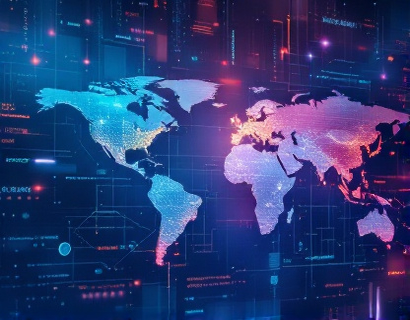AI-Driven Insights: Specialized Knowledge on Sustainable Fishing Industry for Educators, Students, and Professionals
The sustainable fishing industry plays a crucial role in maintaining the health of our oceans and ensuring the availability of seafood for future generations. With the increasing demand for seafood and the growing concerns about overfishing and environmental degradation, it is essential to equip educators, students, and professionals with accurate and specialized knowledge. An AI-driven chat platform has emerged to deliver verified and accurate information tailored to various audiences, including a child-friendly version for safe and educational use.
This platform, designed to provide insights into the sustainable fishing industry, leverages advanced AI technology to ensure content verification and accuracy. The chat interface is user-friendly and interactive, allowing users to engage with a wealth of information on topics ranging from sustainable fishing practices to the ecological impact of fishing methods. For educators, this resource offers a valuable tool to integrate up-to-date and reliable information into their curricula, enhancing the educational experience for students.
For students, the platform serves as an accessible and engaging source of knowledge. The child-friendly version ensures that young learners can explore complex topics in a safe and understandable manner. This approach not only fosters a deeper understanding of sustainable fishing but also instills a sense of responsibility towards environmental stewardship from an early age.
Professionals in the fishing industry, marine biology, and environmental science can benefit from the in-depth insights provided by the AI chat platform. Whether seeking information on the latest research, best practices in sustainable fishing, or policy updates, the platform offers a comprehensive resource. The AI-driven nature of the chat ensures that the information is not only accurate but also up-to-date, reflecting the dynamic nature of the industry.
Understanding Sustainable Fishing
Sustainable fishing refers to practices that ensure the long-term health of fish populations and marine ecosystems. This involves adhering to specific guidelines and regulations to prevent overfishing, protect habitats, and maintain biodiversity. The AI chat platform provides detailed explanations of these concepts, along with real-world examples and case studies.
One key aspect of sustainable fishing is the implementation of catch limits and quotas. These measures help prevent the depletion of fish stocks by regulating the number of fish that can be caught within a specific period. The platform explains how these limits are set based on scientific research and monitoring, and how they vary by region and species.
Another critical component is the use of selective fishing gear. Traditional fishing methods often result in bycatch, where non-target species are unintentionally caught and discarded. The AI chat provides insights into innovative fishing technologies and gear designs that minimize bycatch and reduce the impact on non-target species and habitats.
Ecological Impact of Fishing Methods
The ecological impact of fishing methods is a significant concern in the sustainable fishing industry. Destructive fishing practices can lead to habitat destruction, loss of biodiversity, and disruption of marine ecosystems. The AI chat platform offers a comprehensive overview of these impacts and discusses alternative methods that are less harmful.
For instance, bottom trawling, a method where large nets are dragged along the ocean floor, can cause extensive damage to seabeds and coral reefs. The platform explains the environmental consequences of such practices and highlights sustainable alternatives like pole-and-line fishing or trap fishing, which have a lower impact on the ecosystem.
Additionally, the chat provides information on the role of marine protected areas (MPAs) in conserving marine biodiversity. MPAs are designated regions where human activities are restricted to protect ecological integrity. The platform discusses the benefits of MPAs, including the recovery of fish populations and the preservation of critical habitats.
Role of Technology in Sustainable Fishing
Technology plays a vital role in advancing sustainable fishing practices. The AI chat platform delves into various technological innovations that are transforming the industry. One such innovation is the use of satellite monitoring and data analytics to track fishing activities and enforce regulations.
These technologies help authorities monitor compliance with fishing quotas and identify illegal fishing operations. The platform explains how this data-driven approach enhances transparency and accountability in the industry, contributing to more effective management of fish resources.
Another technological advancement is the development of smart fishing gear equipped with sensors and IoT devices. These devices can monitor fish health, track fishing efforts, and provide real-time data to fishermen. The chat discusses how such innovations not only improve efficiency but also reduce waste and environmental impact.
Education and Awareness
Education and awareness are crucial for promoting sustainable fishing practices. The AI chat platform emphasizes the importance of educating stakeholders, including fishermen, consumers, and policymakers, about the benefits of sustainability. It provides resources and guidelines for creating awareness campaigns and educational programs.
For educators, the platform offers lesson plans and teaching materials that align with curriculum standards. These resources cover topics such as the importance of marine conservation, the science behind sustainable fishing, and the economic benefits of sustainable practices. By integrating these materials into their teaching, educators can empower students to become advocates for sustainable fishing.
For consumers, the chat provides information on how to make informed choices when purchasing seafood. It highlights certification programs like the Marine Stewardship Council (MSC) that ensure seafood comes from sustainable sources. The platform also offers tips on recognizing sustainable seafood labels and understanding eco-labels.
Challenges and Solutions in Sustainable Fishing
Despite the progress made in sustainable fishing, several challenges remain. Overfishing, illegal fishing, and lack of enforcement of regulations continue to threaten marine ecosystems. The AI chat platform addresses these challenges and discusses potential solutions.
One major challenge is the lack of comprehensive data on fish stocks and ecosystem health. The platform explains how AI and machine learning can be used to analyze large datasets and provide more accurate assessments. This technology can help identify areas in need of conservation and inform management decisions.
Illegal, unreported, and unregulated (IUU) fishing remains a significant issue. The chat discusses international efforts to combat IUU fishing, including the use of vessel monitoring systems (VMS) and cooperation between countries to share information and enforce regulations.
Another solution highlighted is the promotion of community-based management approaches. Local communities often have a deep understanding of their marine resources and can play a crucial role in sustainable management. The platform provides examples of successful community-led initiatives and the benefits of involving local stakeholders in decision-making processes.
Future of Sustainable Fishing
The future of sustainable fishing depends on continued innovation, collaboration, and commitment to conservation. The AI chat platform looks ahead to emerging trends and technologies that will shape the industry. One such trend is the integration of blockchain technology to enhance traceability and transparency in the seafood supply chain.
Blockchain can provide an immutable record of a fish's journey from catch to consumer, ensuring that it comes from sustainable sources. The platform explains how this technology can build consumer trust and incentivize sustainable practices throughout the supply chain.
Collaboration between governments, NGOs, and the private sector is also essential for advancing sustainable fishing. The chat discusses the importance of public-private partnerships in funding research, implementing conservation projects, and developing policies that support sustainability.
Finally, the platform emphasizes the need for ongoing education and research to address new challenges and opportunities in the sustainable fishing industry. By fostering a culture of continuous learning and innovation, we can ensure a resilient and sustainable future for our oceans.
In conclusion, the AI-driven chat platform serves as a valuable resource for anyone interested in sustainable fishing. Whether you are an educator looking to enrich your curriculum, a student eager to learn about marine conservation, or a professional seeking to stay informed about industry developments, this platform offers comprehensive and verified information. By leveraging AI technology, we can promote a deeper understanding of sustainable fishing practices and inspire action towards a healthier planet.










































